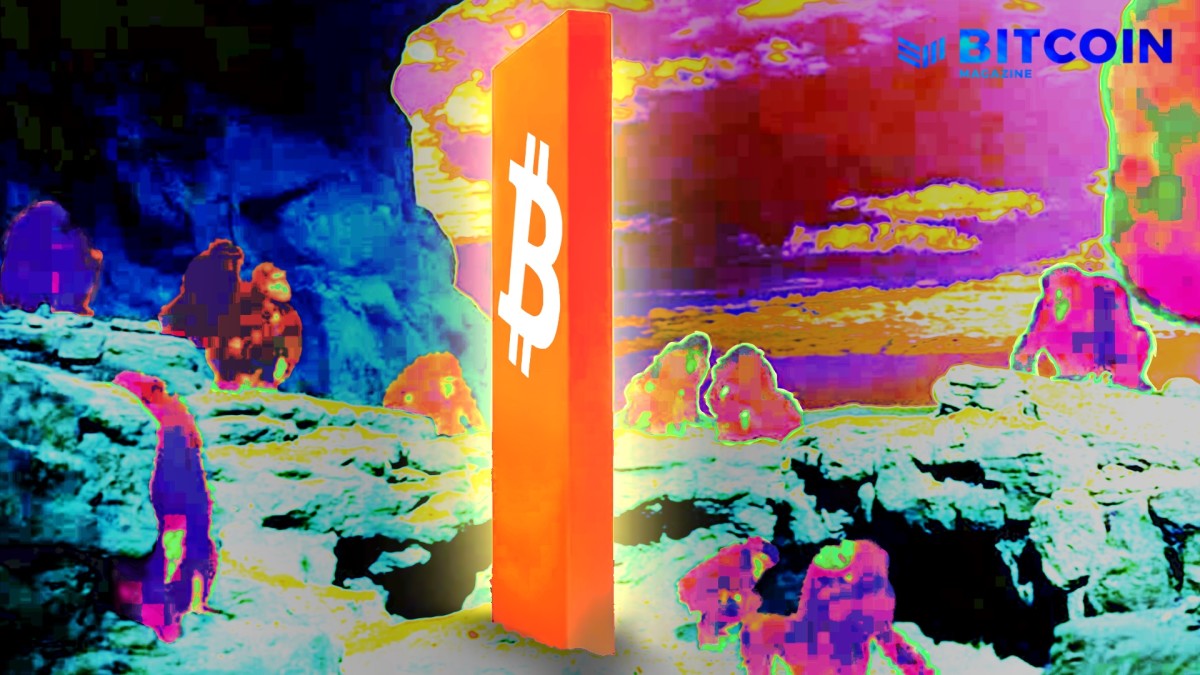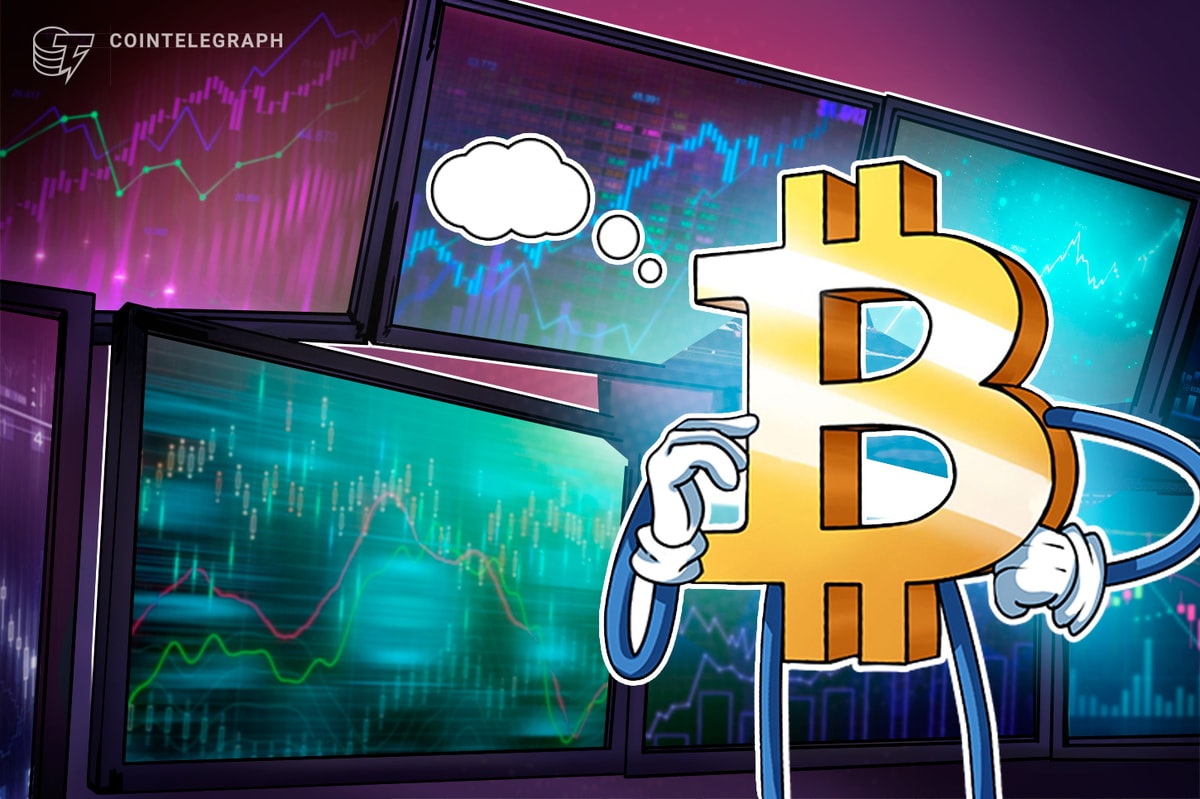Come, let us go down and confuse their language so they will not understand each other.-Genesis 11:7
The curious task of economics is to demonstrate to men how little they really know about what they imagine they can design. -Friedrich August von Hayek
A price system is an information exchange network. It works best when built on top of a globally-shared neutral monetary medium. The more complex society becomes, the more pressing the need for a neutral monetary standard that doesn’t introduce noise into economic signals.
Knowledge Loves Company
One of the most profound insights in economics is Hayek’s take on the nature of prices. In a short and readable article called “The Use of Knowledge in Society,” Hayek explains why there wouldn’t be any exchange — nor any complex society — without the existence of prices.
Prices Are Data Reflecting The Economic RealityA modern economy generates billions of pieces of possibly-relevant information about people’s preferences, investors’ risk appetite, resource scarcity, manufacturing circumstances of particular goods and so on. We need to continually share this information to be able to coordinate our efforts. As the great economist Leonard Read pointed out, no single mind knows how to produce even a simple thing such as a pencil. Economic reality undergoes constant change. Similarly, the price system is in continuous flux, which makes it hard to paint an accurate picture of what’s really going on. When prices emerge in an unobstructed manner, they reflect reality and we can cooperate well. When prices are prevented from emerging or adjusting freely — and thus no longer reflect reality — our ability to cooperate is hindered.
As Hayek says, prices communicate the “knowledge of the particular circumstances of time and place.”. The dominant “use of knowledge in society” isn’t via books, TVs or classrooms; it’s the price system that is mankind’s main knowledge exchange network. And it’s amazingly efficient.
A brief example. Turkey grows around 80% of the world's hazelnuts. Now imagine something happens in Turkey: a civil war, a hazelnut blight, a meteor strike. How does the rest of the world find out that something happened and that walnuts or peanuts should now be used whenever possible? Not from a TV. The skyrocketing price of hazelnuts breaks the story first. The price communicates only the most relevant information: that hazelnuts have become relatively more scarce. It doesn’t matter where in the world hazelnuts are produced or what happened there, what matters is that the nuts are now pricier and people need to economize.
“In abbreviated form, by a kind of symbol, only the most essential information is passed on and passed on only to those concerned.” -Hayek
A price system is a minimum viable medium of knowledge transfer. It allows us to cooperate globally, even if we don’t share the same language, culture or worldview, because these factors do not matter for economic cooperation. Prices are objective guides in our joint struggle to survive and prosper.
There are billions of possible pieces of information that could be relevant to any production process, consumer decision or investment opportunity. Without prices to communicate the knowledge of local circumstances, we would be groping in the dark. And that is precisely what societies without a price system ended up doing: from the Inca empire to the Soviet Union, societies without a working price mechanism turned into slave states which saw little to no progress.
Oi, That’s Noise Money You Got There
We have already established that for prices to convey economic signals properly, they need to represent the underlying economic reality. But prices are often actively prevented from doing so. There are three factors that affect how well prices do their job: how prices emerge, how they propagate and the quality of the price-carrying medium (the money).
How prices emerge: Prices need to arise out of the concept of private property, i.e. privately owned money and capital, land and buildings, machinery and technology, etc. With property in private hands, the incentives are in place to utilize it efficiently. Rewards for good decisions as well as punishments for bad ones accrue to those who are most receptive of them. On the other hand, protecting property owners from bearing the brunt of bad decisions — as is the case with bailouts or subsidies — is a sure way to cripple the price system, as prices then no longer carry the risk component. For a popular illustration of such moral hazard, see the movie The Big Short.
How prices propagate: Even if prices emerge undisturbed from the foundation of private property, price regulation can kill the signal before it is propagated. In the course of the 20th century, one of the most popular forms of price regulation was rent control. The results of rent control is best illustrated with a popular quip from Swedish economist Assar Lindbeck, who compared its effects to city bombing. This is because price regulations such as rent control leads to a degredation of capital; with prices kept below their true market value, it’s no longer worth it for the owners to repair and improve their property.
Many people are surprised when confronted with the view that interest rate manipulation by central banks is a form of price control. But the fact is that an interbank interest rate (which the central bank usually targets) is a type of price, and central banks do everything they can to control this price down to the basis point (0.01%).
Neutrality of a monetary medium: Prices do not exist on their own; they need to be expressed in terms of a monetary medium. The nature of the monetary unit plays a critical role in how well the price system can do its thing.
Let’s say a kilogram of hazelnuts used to cost $10, but then it went up to $11. Now if these prices emerged in a market economy without any government intrusion, the growth in price can reflect two things: the supply of hazelnuts decreased or the demand for hazelnuts increased. Either way, market participants don’t particularly care for the details, as long as they register the signal of increased hazelnut scarcity.
But when the money itself isn’t a neutral measure, there is a third potential cause for the growth in price: an increase in money supply and a resulting dilution of the purchasing power. Also known as: Inflation. The problem then is that the economic reality didn’t change so prices shouldn’t propagate any change in the signal. But with inflation, the price mechanism is distorted with noise and market participants adjust their behaviour as if the signal was real.
Money with an elastic supply is like a tape measure made from rubber; it doesn’t measure anything properly because intrinsically it is subject to dynamic changes.
A monetary medium has to be neutral for prices to work correctly on top of it, but today’s fiat money is anything but neutral. Its supply is centrally managed by a state agency — a central bank — to meet an arbitrarily-defined goal like an inflation rate on a narrow selection of consumer goods and services. The money supply of even the most stable fiat currencies today increases by 5-20% on a yearly basis, causing mayhem in the price system wherever this newly-issued money hits the economy. We have a term for some of its consequences: the Cantillon effect. But even recognizing this barbarous effect barely scratches the surface of what’s wrong with today’s activist monetary policy.
Fiat monetary policy essentially introduces a random number generator into the price system. It affects literally everything in our society: the nature of our jobs, our propensity for consumption over building up savings, even our culture (I recommend listening to a recent discussion between Stefan Livera and Saifedean Ammous).
The non-neutrality of the monetary medium is much more serious than the restriction of private property or a price regulation because it is a global phenomenon. We currently have about 180 national currencies and all of them are subject to activist, centrally-managed monetary policy. It’s no exaggeration to say that all the fiat currencies are on a hyperinflationary path, where the time scale over which it happens is the only difference.
The global nature of the fiat standard is perhaps the major reason why the problem of money neutrality isn’t widely recognized and addressed today, least of all by the economics profession. The case is simply that “everybody’s doing it.” It’s hard to fathom a monetary medium that isn’t controlled by the state when such a form of money has been unheard of for more than 50 years now. When money is defined as “the thing that the state decrees,” of course only fiat is then recognized as money. Through this point of view, all the problems of current monetary systems can allegedly be solved by introducing more and more experimental policies like quantitative easing, repo facilities, negative interest rates, CBDCs and so on.
A Result Of Human Action, Not Human Design
"The price system is just one of those formations which man has learned to use after he had stumbled upon it without understanding it." -Hayek
The price system is a result of human action — millions of people using their property and following incentives — but not of human design. Attempts to design and manage this system fail, whether they take the form of restricting private property, controlling prices directly or manipulating the foundation of the monetary medium.
It’s admittedly naive to believe that a significant share of mankind will grasp the importance of the price system and defend it against intervention. Much more realistic is the prospect that people following nothing else but their own private motives will opt-out of the fiat system and choose bitcoin, as it affirms its value as a reliable store of value over the years.
Bitcoin will begin to repair the price system as it progresses in adoption from a store of value into a medium of exchange. This may take a while, as people will always have the incentive to spend fiat rather than bitcoin as long as they earn their wage in fiat. But it will happen nevertheless, with pockets of fiat collapse around the world being followed by bottom-up bitcoinizations, culminating in global hyperbitcoinization.
Bitcoin as the neutral monetary medium will allow the price system to work undisturbed and develop into mankind's superconductive information highway.
This is a guest post by Josef Tětek. Opinions expressed are entirely their own and do not necessarily reflect those of BTC, Inc. or Bitcoin Magazine.











